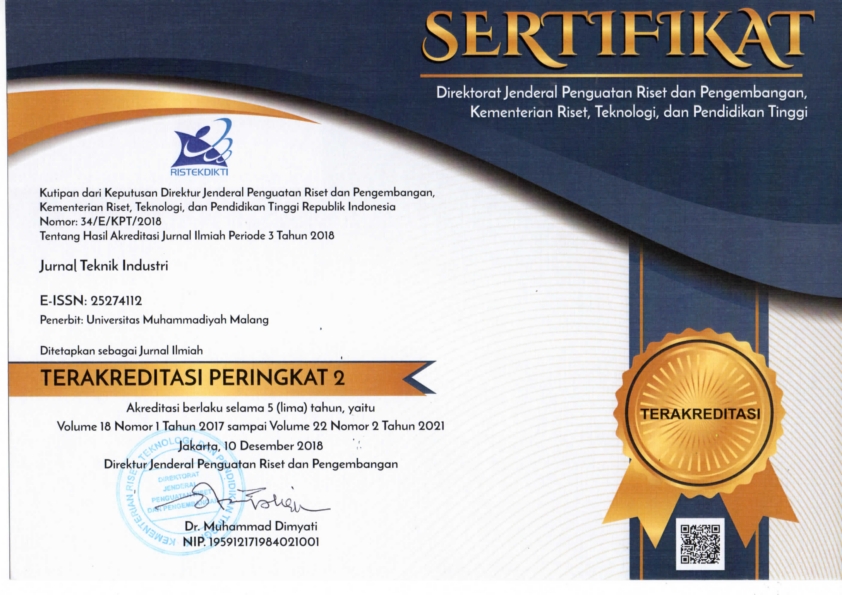Analisa Pemilihan Saham untuk Portofolio Optimal dengan Metode Kriteria Sederhana
DOI:
https://doi.org/10.22219/JTIUMM.Vol3.No2.131-145Keywords:
Stock, Pottfolio, , Simple Criteria MethodAbstract
Generally, problem faced in making a portfolio is the large number of probabilities in risky active stock combinations available at stock market yet, if we put riskless active stock intothose combinations considering this numerous possibilities of portfolio made from stocks at stock market,a question that will arise is which portfolio to be chosen by investors. If acting rationally, the investors will chosen optimum portfolio. simple criteria method is an alternative method in forming the optimum portfolio with objective in determining stock rank in effrcient limit. This methods firstry deveroped by Elton
Edwin, Gruber,and Padberg( 1976) and exposed in Journal of Finance.The calculation made refers to Single-Index Mode, a model result from simplification of Markowitz model, such that
the calculation will be easier and more practical.Based on examination, it is identified that retum correlaltion among securities (particularly on stock) occurs because of response to changes in general market index. Research conducted at BES ( Surabaya Stock Market),within period of December 1999 to August 2001, using monthly data had shown that by using method of "simple criteria for optimal porfolio selection" it is known from 173 stock,that stocks included in optimum portfolio
only 12 (or 6,94%) stock are: Makindo, Mas Murni Indonesia,S arasa Nugraha,Jakarta Int I Hotel & Dev. sari Husada Ultra Jaya Milk, prasdha aneka, Ever Shine Textile Ind., Tirta Mahakam
Ply'wood Asahimas Flat Glass Semen Gresik dan Unilever I ndonesia with proportion of 72.0g% ,4,24y o;12.28% , I %;0.63%;0.5%; 0,445;0.18%a; And 0.45% respectively.
Downloads
Download data is not yet available.
Downloads
How to Cite
Lukman, M., & Hari, M. (2010). Analisa Pemilihan Saham untuk Portofolio Optimal dengan Metode Kriteria Sederhana. Jurnal Teknik Industri, 3(2), 131–145. https://doi.org/10.22219/JTIUMM.Vol3.No2.131-145
Issue
Section
Article











